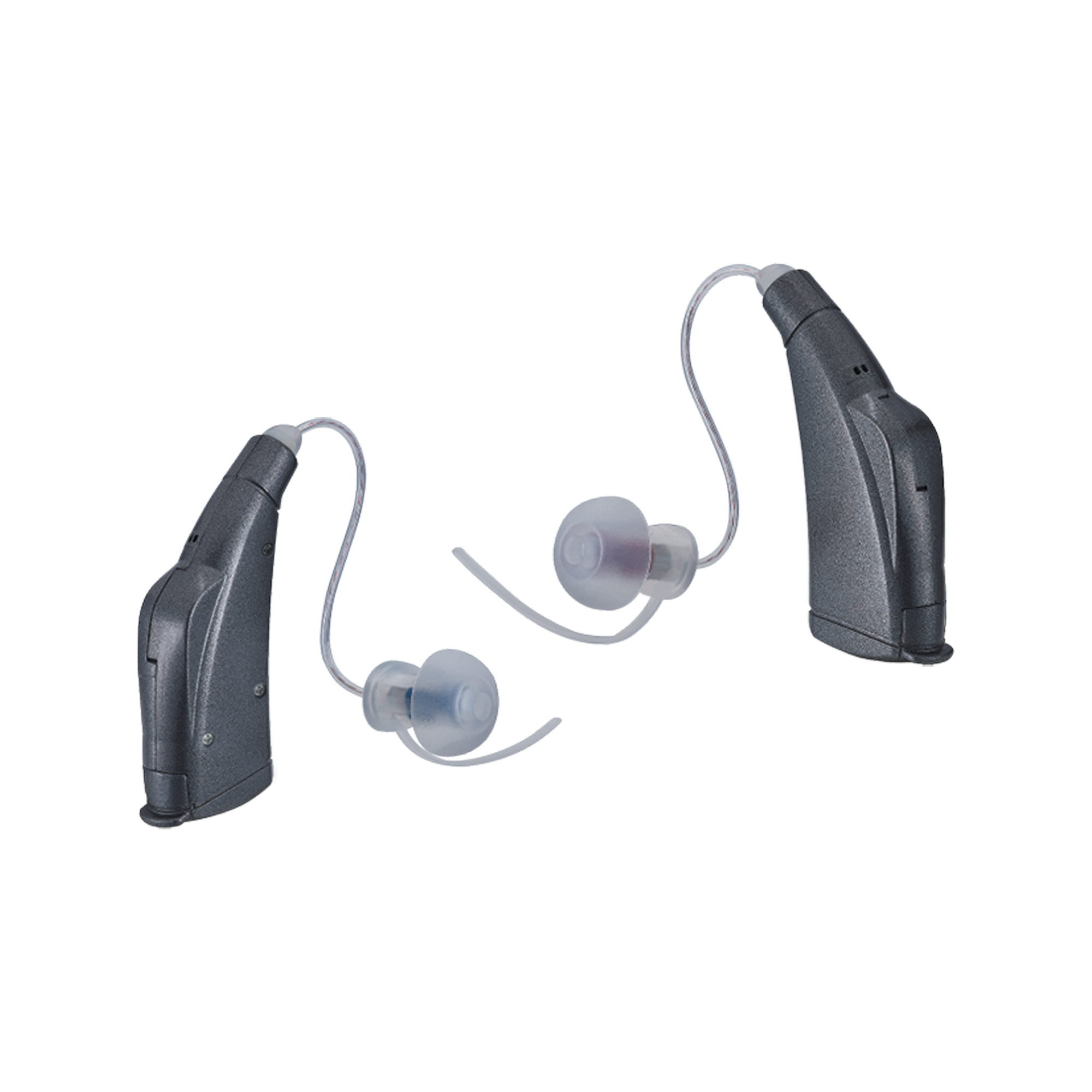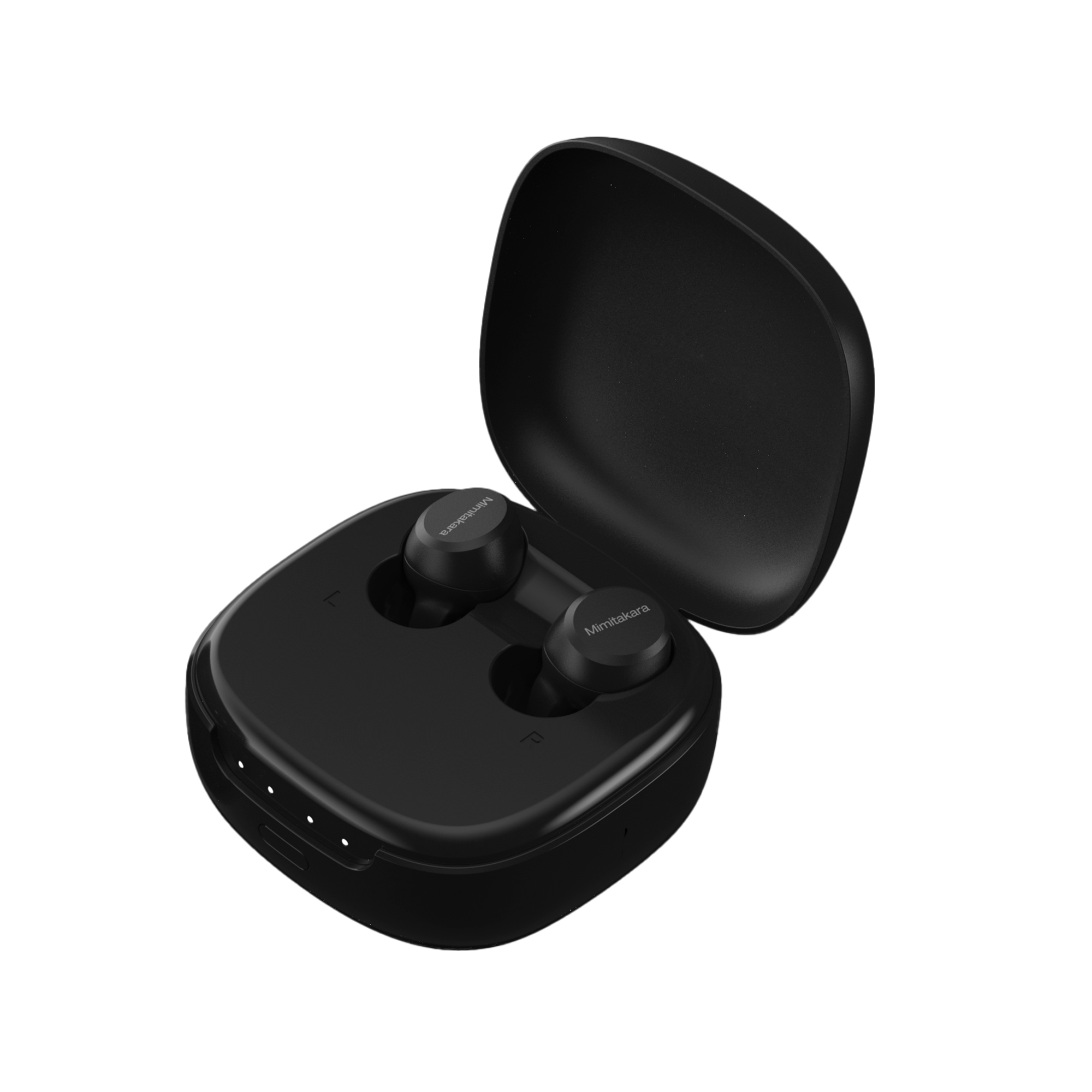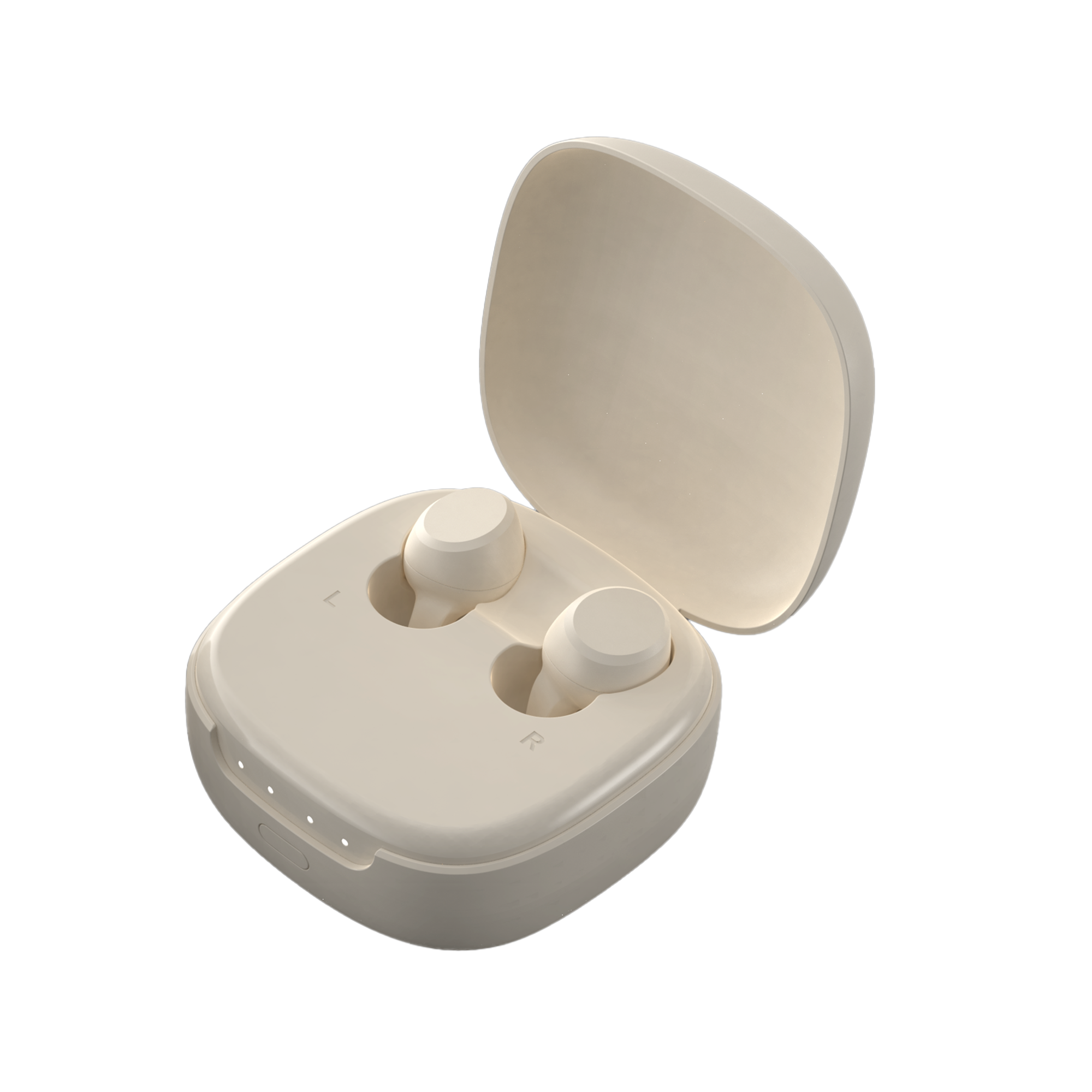Introduction of OTC Hearing Aids
The introduction of OTC hearing aids has been facilitated by changes in FDA regulations, aiming to demystify the process of acquiring hearing aids by reducing the barriers associated with traditional prescription-based models. These non-prescription hearing aids come in various styles and are equipped with features like noise reduction and Bluetooth connectivity, catering to the needs of adults experiencing age-related or sudden hearing loss, without the hurdles of hearing exams and audiologist visits. As we explore the nuances of OTC versus prescription hearing aids, it's clear that these innovations offer promising benefits while also presenting new considerations for consumers navigating the hearing aid market.
Impact of FDA Regulation Changes
The FDA's enactment of new regulations for over-the-counter (OTC) hearing aids has significantly altered the landscape for consumers needing hearing support. Effective from October 17, 2022, these regulations have established a distinct category for OTC hearing aids, separate from prescription models, which simplifies the process for consumers aged 18 and older with perceived mild to moderate hearing loss. This move is based on a comprehensive review of over 1000 public comments, ensuring that the regulations are well-informed and cater to the needs of the intended users.
Key Regulatory Changes and Their Implications
- Safety and Accessibility: The new rules mandate that OTC hearing aids must adhere to specific safety, performance, and design standards. These include a maximum output limit to prevent hearing damage and requirements that the devices cannot be inserted too deeply into the ear canal. Additionally, the aids must be clearly labeled as "OTC hearing aid" on packaging and websites to ensure consumer awareness.
- Cost and Market Impact: With prices ranging from $199 to $999 per pair, the introduction of OTC hearing aids is expected to make hearing assistance more affordable. This price range is made possible due to increased market competition and the elimination of the need for medical exams and professional fittings. The FDA anticipates that these changes will benefit nearly 29 million U.S. adults who could not previously afford or access hearing aids.
- Regulatory Compliance and Consumer Protection: Manufacturers had until April 14, 2023, to comply with these new regulations. This includes registering their products with the FDA and ensuring all devices meet the stipulated requirements. Consumers are advised to verify that products are FDA-registered to avoid purchasing non-compliant devices. Additionally, increased third-party coverage, including potential Medicare support, is expected to further enhance accessibility.
These regulatory changes by the FDA are designed not only to enhance the safety and effectiveness of hearing aids but also to foster innovation and competition within the industry, ultimately benefiting consumers by providing more choices and better prices.
Who Can Benefit from OTC Hearing Aids?
Eligibility and Benefits
- Primary Users: Adults aged 18 and older who self-identify as having mild to moderate hearing loss are the primary beneficiaries of OTC hearing aids. These devices are designed to be accessible without the need for a prescription, making them a convenient option for those who want to address their hearing issues without undergoing professional hearing exams.
- Exclusions: Importantly, OTC hearing aids are not suitable for children. Due to the specific needs associated with their growth and development, children require tailored hearing solutions and should undergo professional assessments to ensure any hearing aid provided meets their specific needs.
- Advanced Hearing Loss Solutions: For individuals experiencing severe hearing loss, prescription hearing aids such as Virto P Titanium, Oticon Own IIC, and Starkey Genesis AI IIC are recommended. These devices are tailored to provide support across a broader spectrum of hearing impairments.
Additional Considerations
- Health Evaluations: Before opting for an OTC hearing aid, it is crucial for individuals to rule out other potential causes of hearing loss such as infections, earwax buildup, or sudden changes in hearing. These conditions may require different treatments or more specialized hearing aids.
- Professional Guidance: Although OTC hearing aids are designed for self-fitting, consulting with an audiologist can be beneficial. Audiologists can confirm whether an OTC device is appropriate and help optimize its use.
- Technological Innovations: Innovations in technology mean that devices like smartphones and true-wireless-stereo (TWS) earbuds can functionally serve as hearing aids. This not only increases accessibility and affordability but also helps reduce the stigma associated with traditional hearing aids.
Impact Beyond Hearing
OTC hearing aids are not just about improving hearing; they have the potential to enhance overall quality of life. Treating hearing loss at an earlier stage can help delay or prevent associated conditions such as cognitive decline in older adults. This broader impact highlights the importance of accessible hearing care solutions like OTC hearing aids.
Comparative Analysis: OTC vs. Prescription Hearing Aids

Prescription hearing aids such as Phonak Audéo Lumity offer advanced features including Bluetooth connectivity, noise reduction, speech enhancement, fitness tracking, and language translation capabilities. These aids are designed for individuals requiring tailored auditory assistance, often necessitated by more complex hearing loss conditions. The customization extends to precise adjustments in sound settings managed by audiologists, ensuring users receive optimal support tailored to their specific hearing profiles.
Safety concerns for both OTC and prescription hearing aids include potential issues like earwax buildup, skin irritation, and headaches, which necessitate careful consideration and occasional professional consultation. The choice between OTC and prescription hearing aids hinges on several factors: cost, the extent of hearing loss, desired features, and the value of professional audiological support. OTC hearing aids, typically priced between $200 and $1,000 per pair, provide an affordable solution with features such as noise reduction and Bluetooth connectivity, suitable for mild to moderate hearing loss. In contrast, prescription aids can cost between $1,000 to over $6,000, reflecting the advanced technology and customization they offer.
Market dynamics also play a role, with prescription hearing aids experiencing increased wholesale costs. However, the entry of more brands into the market has applied downward pressure on prices, potentially making high-quality hearing aids more accessible to a broader audience. This competitive market not only drives innovation but also enhances consumer choice, ensuring there are options available to suit various needs and budgets.
Key Considerations When Choosing OTC Hearing Aids
Evaluating Your Needs and Comfort with Technology
- Hearing Test Requirement: Before purchasing over-the-counter hearing aids, it's crucial to get your hearing tested, either through a hearing care provider or using online and smartphone-based testing options.
- DIY Comfort Level: Assess your comfort with self-setup and adjustments as OTC hearing aids require users to handle their own device management.
- Customizability and Control: Many self-fitting OTC hearing aids offer smartphone apps that allow for adjustments and greater customization, catering to different levels of hearing loss.
Device Types and Support Options
- Device Shape: Choose between in-the-ear aids, which are smaller and less visible, and behind-the-ear aids, which might offer better control over background noise.
- Customer Support: Ensure that the OTC hearing aid brand provides robust customer support, which can include phone-based, online, or in-person assistance from licensed professionals.
- Return Policy and Warranties: Look for products that offer at least a one-month return policy and compare warranty periods to ensure long-term usability and support.
Role of Audiologists and Insurance Considerations
- Audiologist Consultation: Even for OTC models, consulting with an audiologist can be beneficial to determine if the selected hearing aid suits your specific communication needs and to assist in device programming.
- Insurance Support: While insurance coverage for hearing aids varies, it's important to check if your plan provides any support for OTC models. In some states like Maryland, adult Medical Assistance patients may obtain hearing aids through a specific approval process.
How to Choose the Right OTC Hearing Aids
Evaluating Key Features and Compatibility
- Assessing Durability and Functionality: When selecting an OTC hearing aid, it's essential to consider the durability and functionality of the device. Check for features like water resistance and battery life, which contribute to the longevity and reliability of the hearing aid. Additionally, evaluate if the device offers easy-to-use controls and clear instructions, which are crucial for everyday use.
- Smartphone Compatibility and Tuning: Ensure that the hearing aid is compatible with your smartphone. This compatibility allows for convenient adjustments and tuning to match your specific hearing needs. Look for hearing aids that offer advanced app features for real-time volume and frequency adjustments, enhancing the user experience.
Top Picks and Expert Recommendations
- Jabra Enhance: Recognized as the best overall OTC hearing aid for its robust support and industry-leading three-year warranty. It also features a 100-day free trial period, allowing users to test the device thoroughly.
- Eargo: Known for its invisible fit, Eargo is ideal for those seeking discreet hearing solutions. It combines high functionality with aesthetic design, making it a popular choice among users.
- Lexie: Rated as the most user-friendly, Lexie aids are equipped with intuitive controls and a user-centric design, suitable for those new to hearing aids.
- Mimitakara: Offers affordable OTC hearing aids options with 1 year warranty and 30 day money back guarantee. Mimitakara also offers Mimitakara Protection Plan to safeguard your product protections.
The Future of Hearing Aids: Trends and Predictions
Integration of Advanced Technologies
- Artificial Intelligence (AI) and Machine Learning: The integration of AI in hearing aids continues to evolve, allowing these devices to adapt dynamically to the user's environment by optimizing settings in real-time for enhanced listening experiences. Additionally, AI algorithms will utilize vast data to diagnose hearing disorders more accurately and efficiently.
- Augmented Reality (AR) and Biometric Sensors: Future hearing aids will incorporate AR to provide augmented auditory information, enriching the user's interaction with their environment. Biometric sensors will play a crucial role, tracking health metrics like heart rate and physical activity, which could be vital for users monitoring specific health conditions.
Market Trends and Consumer Preferences
- Hearable Technology Acceptance: The normalization of hearing aids through the hearables market is expected to shift public perceptions, reducing the stigma associated with their use. This trend is supported by the growing consumer awareness of audiology and the benefits of hearing aids.
- Eco-Friendly Innovations: There is a significant push towards using sustainable materials in the manufacturing of hearing aids, reflecting a broader consumer demand for environmentally responsible products.
Teleaudiology and Accessibility
- Expansion of Remote Services: Teleaudiology is set to become more prevalent, offering essential hearing care services remotely, which is particularly beneficial for individuals in underserved areas. This advancement aligns with the increased use of telehealth solutions across the healthcare sector.
- Public Health Initiatives: Efforts to improve public health literacy about hearing aids and hearing loss are crucial. These initiatives aim to promote hearing health, prevent hearing loss, and encourage the acceptance of hearing aids as a normal part of daily life.
OTC Hearing Aids FAQ
What advancements are expected in hearing aid technology in 2024?
In 2024, some hearing aid technology will incorporate advanced AI algorithms that dynamically adjust settings based on the wearer's environment. This technology will automatically modify the volume and frequency of sounds to enhance the listening experience in real-time.
How did President Biden impact the availability of over-the-counter hearing aids?
President Biden's Executive Order on Promoting Competition in the American Economy directed the FDA to allow the sale of hearing aids over the counter without a prescription. This initiative was aimed at reducing costs and increasing accessibility.
Are over-the-counter hearing aids effective for all levels of hearing loss?
Over-the-counter (OTC) hearing aids are designed for adults who have mild to moderate hearing loss. They are not suitable for children or adults with severe hearing loss or those who experience significant hearing difficulties, as these devices may not provide sufficient sound amplification for their needs.
Conclusion
The exploration of over-the-counter (OTC) hearing aids in this analysis underscores a significant evolution in hearing care accessibility and technology, driven by regulatory changes and consumer demand. The shift towards OTC hearing aids not only promises to make hearing assistance more affordable and accessible but also stimulates innovation within the industry. By offering a detailed examination of the benefits, considerations, and available options, this article aims to guide readers through the nuanced landscape of modern hearing assistance, underscoring the importance of informed choice in enhancing one's quality of life through improved hearing.
As the hearing aid industry continues to transform, it's clear that the integration of advanced technologies and the push for greater consumer empowerment will play pivotal roles in shaping the future of hearing care. The significance of these developments extends beyond mere convenience, holding the potential to profoundly impact public health and societal attitudes towards hearing loss and treatment. With the wealth of options now available, individuals seeking hearing assistance are encouraged to explore the best fit for their needs, preferences, and lifestyles, ultimately leading to more personalized and effective hearing aid solutions.













